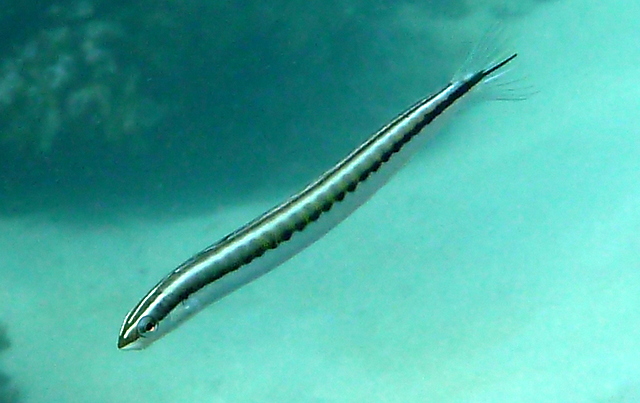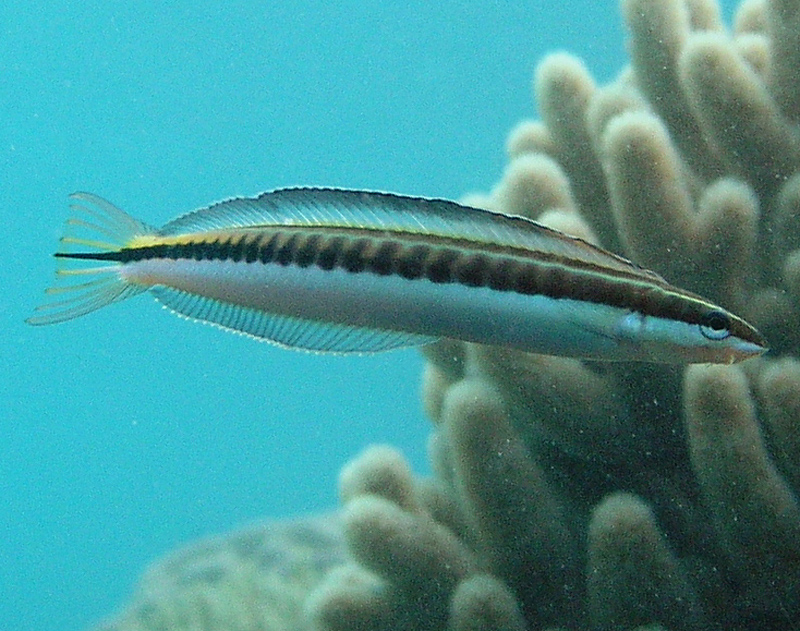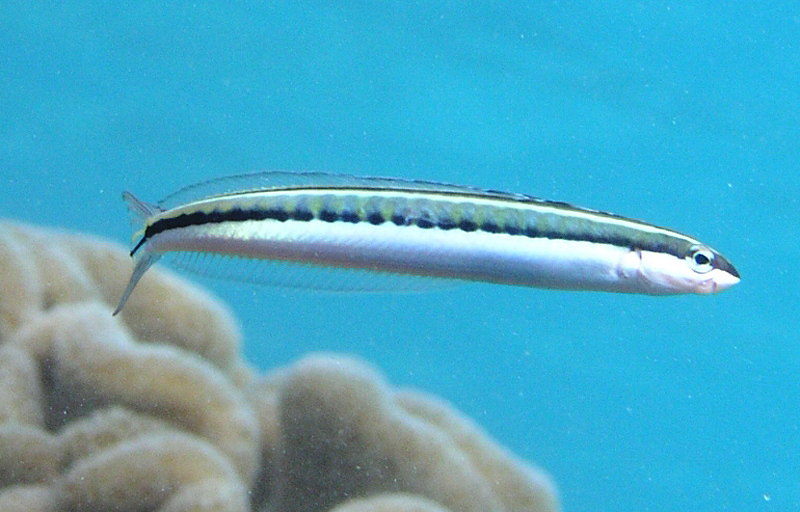�
�

©David Witherall and Nicole Holdsworth: Piano Fangblenny, Plagiotremus tapeinosoma, Ocean Freedom, Upolu Reef
�
���
Plagiotremus tapeinosoma
Piano Fangblenny

©David Witherall and Nicole Holdsworth: Piano Fangblenny, Plagiotremus tapeinosoma, Ocean Freedom, Upolu Reef
Kingdom
Animalia
Phylum
Chordata
Class
Actinopterygii
Order
Perciformes
Family
Blenniidae
Genus
Plagiotremus
Species
Plagiotremus tapeinosoma
Colours
Distinguishing features
A small elongate fish with a white belly and a dark stripe running the length of the body, with a series of regular blotches through the mid-section.
Size
- Up to 14 cm (Standard length)
Depth range
- Depth range data is not yet available.
Synonyms
Interesting facts
- This fish will sneak up on other fish, tear off a scale (or a bit of their skin) and then quickly swim away. It has two specialised teeth for removing scales that look like the teeth of a sabretooth tiger.
Distribution
Distribution and habitat preferences
Coral rich areas in lagoons and back reef habitats, and reef fronts outside the surge zone. The fish usually has a hole in the reef into which it retreats tail first if threatened.
Found in most reef habitats around the island.
Behaviour
The Piano Fangblenny is a solitary species which attacks other reef fishes to feed on the mucous, scales and skin tissue it removes with its sharp teeth. Unlike its congeneric the Bluestriped Fangblenny, it does not appear to mimic the Common Cleanerfish. Rather, the Piano Fangblenny relies on a rapid rush to attack unsuspecting fishes.
Web resources
References
- Côté, I.M. and K.L. Cheney (2007). Aggressive mimics profit from a model–signal receiver mutualism, Proceedings of the Royal Society B, 274: 2087-2091. LIRS catalog number 1088.
- Côté, I.M. and K.L. Cheney (2007). A protective function for aggressive mimicry? Proceedings of the Royal Society B, 274: 2445-2448. LIRS catalog number 90029.
- Cote, I.M. and K.L. Cheney (2004). Distance-dependent costs and benefits of aggressive mimicry in a cleaning symbiosis, Proceedings of the Royal Society London B, 271: 2627-2630. LIRS catalog number 90025.
- View all references





